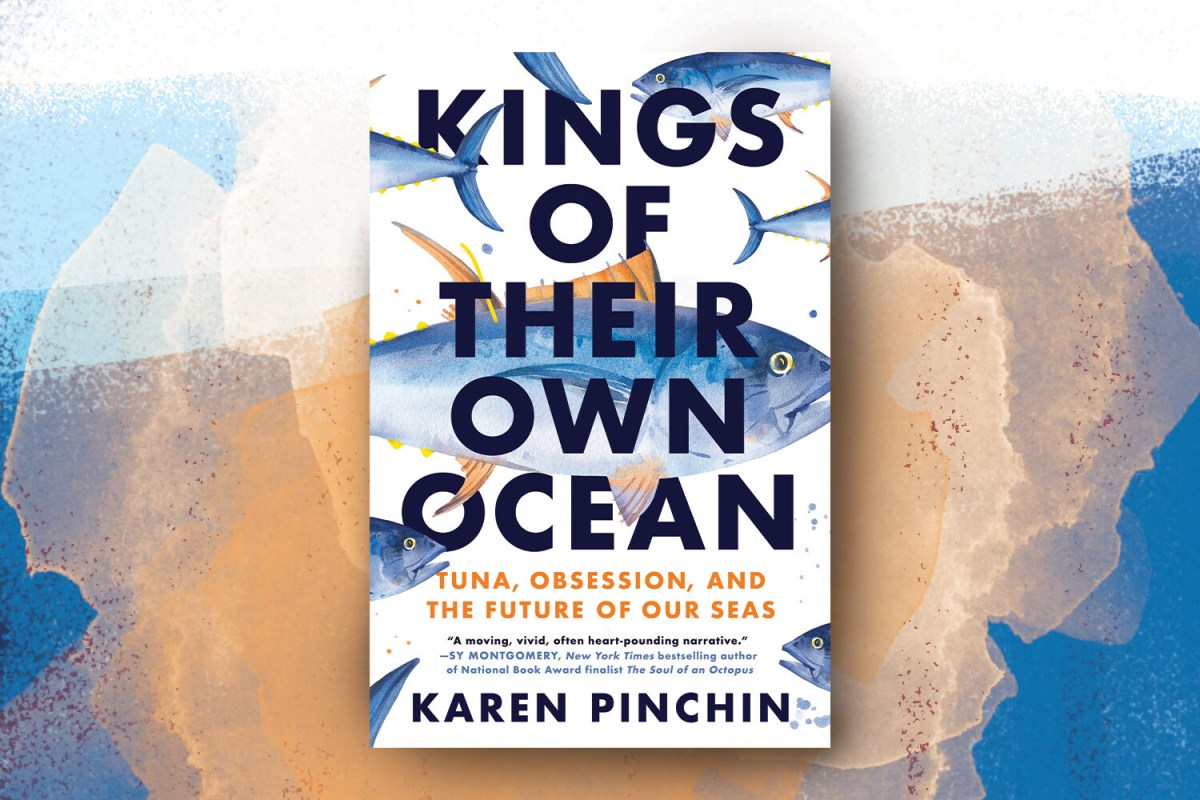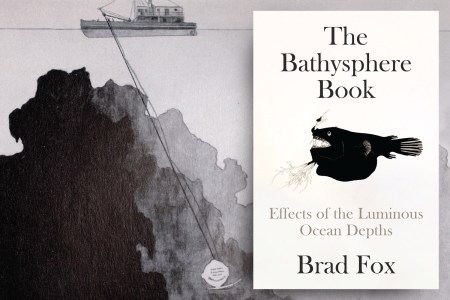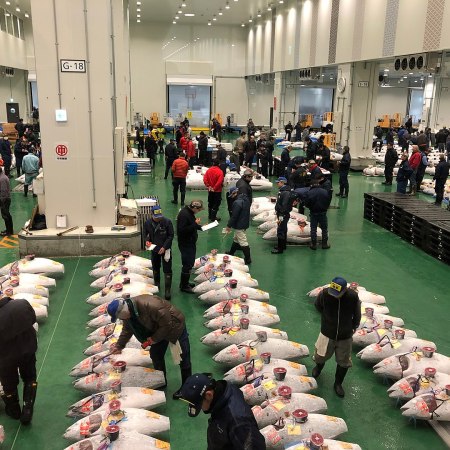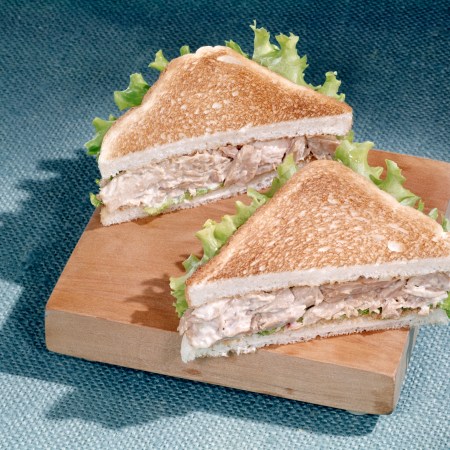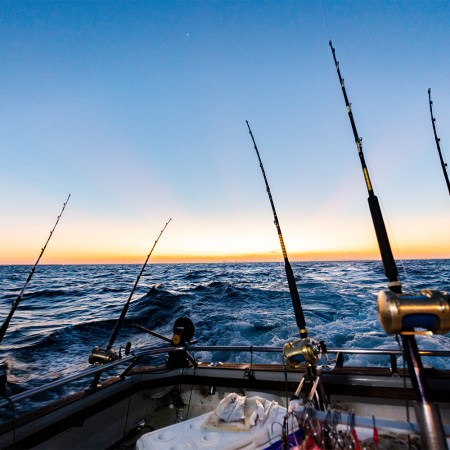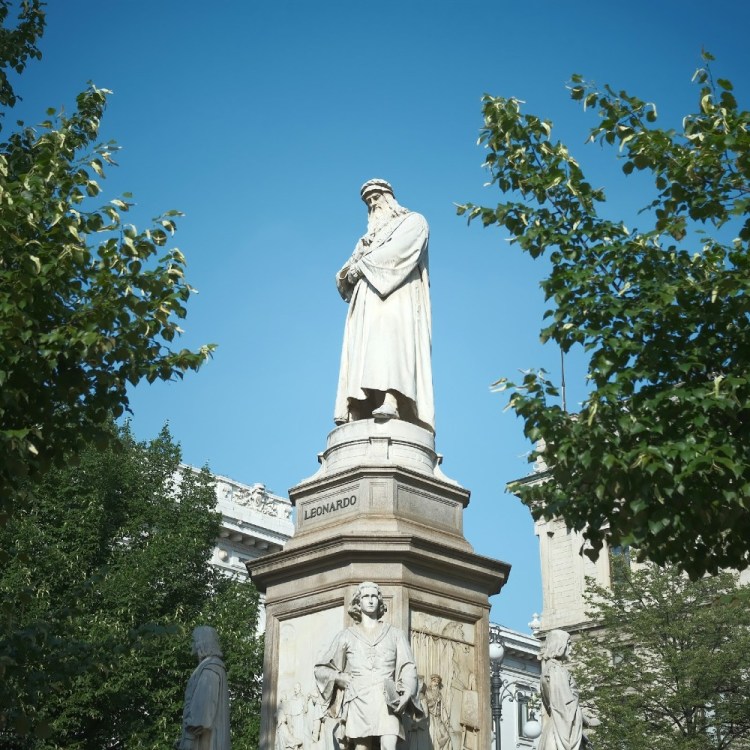What does tuna mean to you? For someone who makes money fishing, it might be the way they earn a living. For a scientist, it can be a fascinating guide to the planet’s oceans. For a chef, it might be an ingredient in a savory dish. In her new book Kings of Their Own Ocean: Tuna, Obsession, and the Future of Our Seas, journalist Karen Pinchin explores the fascinating and sometimes contradictory world of tuna — and the lives of the people who are obsessed with them.
Pinchin’s book is especially wide-ranging in its scope; read it and you’ll discover everything from how Japanese airlines helped popularize sushi to the inner workings of the Unification Church. There are two figures around whom Pinchin structures most of the book: one is a tuna dubbed Amelia, who scientists know far more specifics about than they do relative to other fish of her species. The other is Al Anderson, described early on in the book as “an industry-famous skipper” who made a name for himself as the captain of charter boats who would venture into the ocean and catch fish, tagging and releasing most of them. He emerges as an especially fascinating figure in the book — at times admirable for his dedication and knowledge, at others unnerving for his flaws.
Pinchin spoke with InsideHook about the unlikely places researching this book took her, how it changed her own feelings about fish and fishing, and the downside of a freezer full of severed tuna heads.
InsideHook: There’s a point near the end of Kings of Their Own Ocean where you talk about how tuna are, perhaps, not as badly affected by climate change as many other creatures, humans included. Was that a surprise when you found that out?
Karen Pinchin: I would say it was sort of a surprise for me to read because everything else seems horribly affected by things. It’s funny when you go into interviews with a sense of what you think the story is. Every scientist who has been extremely hands-on with bluefin for the past 10 or 20 years, you ask them the question, “Are you worried about the bluefin?” And almost every person would say, “Oh no, we’re worried about literally maybe every other species.”
The bluefin evolved between 65 and 55 million years ago. As you know, it can travel these huge distances. It has this amazing ability to warm its body and it has the speeds where it can feed over these huge distances. I think it’s startling to us, particularly for me as an environmental journalist who’s used to covering climate change, that there was this hopeful story. My instinct was not to say, “Well, where’s the bad news?” But as all my reporting threads kind of drew together, it was strange to realize that this is, at least in the short and medium term, an intensely hopeful story, which is kind of more fun to write as well. The tuna evolved tens of millions of years ago and has found its ideal form and has stayed like that. So is that common? Are there a fair number of other creatures on the earth that are that similar to that?
Before I reported on bluefin tuna, a lot of my deep investigations were around the American eel. And that is another ancient species that seems to defy humanity’s attempts to control and monetize it. I seem to have this passion for extremely niche, wily protagonists in the ocean. But I think in every walk of life, these animals have evolved over that period of time. It’s kind of a beautiful aspect of evolution that they have these perfectly engineered bodies and each fill niches in the ecosystem.
And so for me, the scariest part about learning more about the fish is that we came so close to wiping out bluefin tuna. I try not to downplay those at all throughout the book because it was environmentalists who really did save this fish. The specter-like part of this story is what would have happened if we had lost the tuna? What would happen if we had gotten to that point of the cod collapse of Newfoundland? It’s like when you have an ecosystem and all the wolves are gone, you don’t know what’s going to happen with the deer and the beavers. Even our best computers can’t tell us how these extremely beautiful natural systems are going to react.
Physiologically, if you see the fins on a tuna, it’s incredible that there are actually hollows in its sides where it tucks its pectoral fins. It’s evolved so perfectly, right? Its eyes are flushed, it has these huge eyes. To see a giant tuna is a really remarkable thing.
The phrase that you used in the book is “a grand piano shaped like a nuclear weapon,” which is so intensely evocative. I can imagine that being both awe-inspiring and a little terrifying.
There were instances where I wrote about Al and his daughter catching the fish, and the fish flopped — you can break ribs, you can break bones. These are huge, muscular fish. In the south of Spain, I describe the sharp points on the tuna and how the Almadraba workers would actually have to get stitched up because they’d be covered in these inch-deep cuts. Can you imagine? It really is primal, the act of catching a fish that big. It has huge payoffs, but it’s been historically extremely dangerous.
Another statistic that got my attention was that out of 30 million fertilized eggs, only two would grow to full adulthood. You also mentioned that some of those young fish were getting bigger by eating other young fish, which was also pretty eye-opening.
You do get natural attrition, but when they’re migrating to where they’re going to spawn, there are so many eggs inside of them that their stomachs wither and tuck away. So their bellies are almost entirely sperm and eggs, which is why they’re so hungry when they need to get back to the Atlantic.
It was like I had to understand Al because I’m not naturally a fish person. I am interested in fishing. I eat fish, I think fish are fascinating, but there are people like Jason Williams, the guy who was on the trip where Amelia was tagged. He eats and breathes fish. When my fact checker reached out to him, he had extremely detailed fact checks on extremely detailed fishing topics.
I’m not necessarily that person, but what a gift to be able to get to know an animal so intimately — to the point where I could almost pretend I am the fish. And that in talking to fishermen, that’s what they do. That’s what Al did. It’s like there’s a minute where you’re casting in and it’s like you need to be able to visualize how your bait or your lure is dropping, how the fish will perceive it, how it will strike — and then how you’ll react.
You cover so much in this book, from Al’s story to the larger factors that made tuna such a valuable commodity for so many people. How much of that did you know beforehand, and how did you figure out the right way to organize all that you learned?
I’m so glad you asked this question because this has been the mission of this book. God bless my agent and god bless my editors at the publishers that brought this book on board because I came in essentially saying, “This is a story about a man and a fish, but it’s also a story about almost everything.” I wanted it to be about everything.
Have you ever heard the phrase “wicked problems”? They’re these problems that are so complex and so interdisciplinary that if you pull one thread, it unravels and all of a sudden you have everything. And that’s always been my tendency as a journalist: to take on these extremely complex topics.
In this case, it was kind of beautiful how Al’s life coincided with, essentially, the rise of the globalized fishing industry. His life coincided with the rise of how we understand fish in the ocean. And Amelia’s life coincided with this extremely political and economic moment in bluefin history. It was a journalist’s dream to have this one incredible complex character. He was not perfect. I went to great pains to make it clear that this is a real, complex person — and a fish whose internal life we can only try to imagine. And then let me take you on this journey, right? Across time periods, across geographies.
Structurally the book was quite complex because it involved leaving out quite a bit of research and scenes and people that took away from this sense of moving forward through time and themes, with the goal that if you can fall in love with Al and Amelia, then maybe a reader could see that there’s hope — and that with good intentions and thoughtful execution of a plan, we can all affect our communities in these ways. Al was just one guy with a boat, a fishing rod and a tagging stick, and he accomplished something really remarkable.
I did not know before reading this that catching and tagging a tuna that’s already been tagged is a significant scientific occurrence.
The statistical improbability, right? You know those people who write their names on a dollar bill and then hope the dollar bill will come back — and then it’s incredible when the dollar bill comes back? Some people might spend their whole lives waiting for that bill to come back. It’s kind of a similar idea.
In Kings of Their Own Ocean, you write about how bluefin tuna went from not being a delicacy to being a hugely prized fish, to the point where the population was at risk. And it also seems like some places that were historically fishing communities have now become fairly luxurious places to live — Block Island, for one. How did the economic transformation of all these things play into the narrative?
That’s one of the reasons why I felt really strongly about including Wedgeport, Nova Scotia, and the history of the international fishing tournaments, and the anecdote of Russell Arundel who started the micronation off the coast of Wedgeport, which is just the most wild romp. Someone was asking me, “Why did you include him?” I think he’s an extremely important character in demonstrating how fads and money and taste, whatever the zeitgeist is, can have this kind of cumulative effect. Very often it’s just like a butterfly’s wing: this happens, then this happens and this happens — and then all of a sudden we’re all eating sushi.
I think the investigative journalist in me wanted to really forensically go back in time, go back across geographies. To see the role of these extremely skilled Japanese fishers who were living in California and their rise in the canned tuna industry before they were all interned during the Second World War. And, you know, even that small detail of how a convent of nuns protected this mutual trading company, which was the big wholesaler of Japanese foodstuffs, so when the war was over, they were able to resume their work. All these little interesting, coincidental things end up accumulating to this giant capitalist system that we now live in, right?
I think one of the interesting things is drawing society’s attention to the fact that paying attention to characters, personalities and details like this is how we get history. And history is how we get the present moment. That’s relevant to how we eat food and how we save the planet from climate catastrophe. It’s all intertwined.
Late in the book, you used the phrase “my darkest moments working on this book.” What was the biggest challenge for you in terms of writing?
About six months before the book and main edits were due, my husband was diagnosed with cancer.We have a young son, and we had just gotten a puppy the week before. Al has cancer in the book. My dad dies of pancreatic cancer at the beginning of the book. I went from being someone who was more in the role of daughter, and then moved into the role of wife. I think it gave me such an interesting new perspective on what [Al’s wife] Darryl would have been going through during a lot of the chronology of the book.
There’s a challenge to balancing the personal tragedy and all the collective climate grief that we’re experiencing now together but also wanting to eat good food and make a good life for our son. I love eating, I love cooking, I have these hedonistic qualities. And so it’s a question of how do you keep these both in suspension when actual life is unfolding around you and people are getting sick and people are dying?
The extraordinary news is that my husband successfully fought off the cancer and he is now cured, essentially, with monitoring he will be cured. And then you emerge out of that experience with a real sense of the stakes. Al would have done that with tagging and now I’m doing that with the book. Our lives are still spookily mirroring each other and I don’t take it for granted. I really don’t believe in coincidences.
Revisiting the History of One Scientist’s Journeys Deep Into the Ocean
Brad Fox’s “The Bathysphere Book” chronicles an extraordinary voyageYou mentioned before that you fish, so I’m curious, did researching this change the way that you fish?
I’ve increasingly turned to using barbless hooks. I now have an increased appreciation for when you catch a fish, how traumatizing that is for a fish, if you do plan to release it. Up here in Nova Scotia, we have a fish called a pike or a pickerel. Here they’re invasive and they’re killing all the bass and the trout. Here, you can’t catch one and release it, you have to keep it and either kill it or eat it.
I also have an increased sensitivity to the fact that these rules are not arbitrary, like the size limits that the government sets. For instance, mackerel are running and my husband will go out after work every day and try to catch some mackerel. He has a stick and he’s measured the minimum size on that stick.
You go by the dock and see someone catching fish. They’ll catch a little tiny guy and you’ll see them keep it. Before writing this book, I don’t know if I would have been as sensitive to the fact that a lot of the fisheries scientists who come up with these numbers, they’re not doing it to screw people who want to catch fish. They’re doing it because, in many cases, there are good scientific algorithms that output how many fish can be sustainably caught and what size those fish should be.
I eat more fish. I definitely eat more fish because I understand and I’m more choosy. I’m that awkward person who goes to a sushi restaurant and says, “Where did this bluefin tuna come from? Was it caught on a rod and reel? Was it harpooned?” Because you realize how easy it is to ask these questions and it helps you understand the whole ecosystem. Chefs mostly love talking to me about where they get their seafood because in a lot of cases they’re really proud of the lengths they’ve gone to source good seafood.
Earlier, you said that you had a lot of research that you weren’t able to put into the book. Was there any one thing that was really fascinating but just didn’t fit?
There was. Luckily enough, I just finished a feature on sustainable seafood published in The Globe and Mail here in Canada. And it was on a trip that I took with two Acadian fishermen out of Wedgeport. They picked me up at a port near Halifax, and I actually got to go out on a trip and see how these fish are caught, how they’re harpooned, how they’re tagged. These guys actually work with [marine scientist] Molly Lutcavage. They’re one of her partners doing the tagging work when she comes up to Nova Scotia, so I actually got to see him put the tagging stick in the fish — seeing the process of how they chainsaw off the head, put the head in a box and then that box is put into a storage facility where it’s frozen.
Then I went and followed the Canadian fisheries biologist as they took out this frozen box of tuna heads. You can imagine how it smells. I could not get the smell out of my clothes for weeks. He then chainsaws open these heads and picks out the otoliths, which are the little ear bones, and analyzes those. And that’s how we’re getting the data that the stock is getting healthier and that a lot of the fish showing up in Nova Scotia were born in the Mediterranean.
It was incredible, but it added all this complexity to my understanding of the story. So when it came to actually writing the story, it didn’t make sense to put it in, chronologically. But every single person along the way was so generous with their time. And this poor biologist, it was the middle of COVID. He was like, “Who is this person?” I drove for four hours to get there. I was meeting him on a wharf. I was thinking, “This is the best part of the job.”
Every Thursday, our resident experts see to it that you’re up to date on the latest from the world of drinks. Trend reports, bottle reviews, cocktail recipes and more. Sign up for THE SPILL now.
